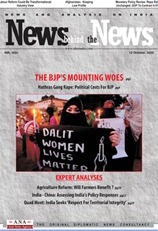Tibetan scholar's body shows no decay after death
A Tibetan Buddhist scholar in Taiwan has entered into the rare spiritual meditative state known as 'thukdam' after being declared clinically dead on July 14, it has been claimed

A Tibetan Buddhist scholar in Taiwan has entered into the rare spiritual meditative state known as 'thukdam' after being declared clinically dead on July 14, it has been claimed. Thukdam is a Buddhist phenomenon in which a realized master's consciousness remains in the body despite its physical death, the Central Tibetan Administration (CTA) said.
Though they are declared clinically dead, their bodies show no signs of decay and are found to remain fresh for days or weeks without preservation. Scientific inquiry into this phenomenon has begun a few years ago under the initiative of Tibetan spiritual leader the Dalai Lama.
After the clinical death of the Tibetan Buddhist scholar on July 14, the mortal remains of Geshe Gyatso was returned to his residence, the CTA's office in Taiwan said in a post.
His close friend, Geshe Norbu, of Sera Jey Monastery, who had arrived for the prayer services held on the first and second day observed that his body emitted no signs of death in hue or odour, and assessed that the deceased had entered the state of 'thukdam'.
On the third day, president-abbot Jigme Namgyal of the International Tibetan Buddhist Centre had seconded the observation.
At the time, Taiwan was in the midst of peak summer, yet nothing could be detected from an observation of the mortal remains.
The staff of the office of Tibet revisited the body on the fifth day to determine signs of decay and decomposition. Similarly, it was examined by medical professionals who expressed their complete astonishment at the phenomenon, and the account of which was subsequently apprised to the office of the Dalai Lama here.
Secretary Tsegyam, who relayed His Holiness' instruction on the matter, advised that a detailed report of the observation of the medical professional and a scientist's if possible be conducted for research purposes.
Accordingly, Geshe's students approached Taiwan's research centre, Academia Sinica, which in turn requested a forensic examination of the meditating monk.
In this regard, the Gaden Phodrang office via secretary Tsegyam advised that conducting the examinations would be of benefit to the ongoing research on 'thukdam' and Buddha dharma in general.
On July 24, the physicist and his assistants from Taiwan's research centre Academia Sinica arrived and conducted the first forensic examination on the monk.
Physicist Yuan Tseh Lee had previously participated in a 2018 dialogue conducted between the Dalai Lama and Chinese scientists on effects of quantum physics held in Dharamsala.
Lee expressed his bewilderment and noted its similarity to the description provided by His Holiness during the dialogue.
On examination, it revealed the blood pressure of the body to be at 86, quite close to a living human, the CTA said.
Additionally, the suppleness of the skin, the apparently undecomposed state of the internal organs, the facial glow and warmth was noted under close examination.
It was supplemented by an examination of the neural activity of the brain of the deceased on July 28 and August 1 by a Taiwan University's psychology professor and his assistants who noted significant activity.
Similarly, the office of the Dalai Lama directed Tseten Dorje of Delek Hospital to guide the physicist, which was coordinated with the photographic documentation of the gradual changes in the body which were shared with Tsetan Dorje and his guidance was followed through by the assistant.
As per the astrological chart, the body was sent for preservation and the account of Geshe Gyats's 28 days of 'thukdam' documented and presented by scientists, professors, medical professionals along with the photo and video documentation, reports of caretaker and students were submitted to the office of the Dalai Lama.
(IANS)
























Post a Comment